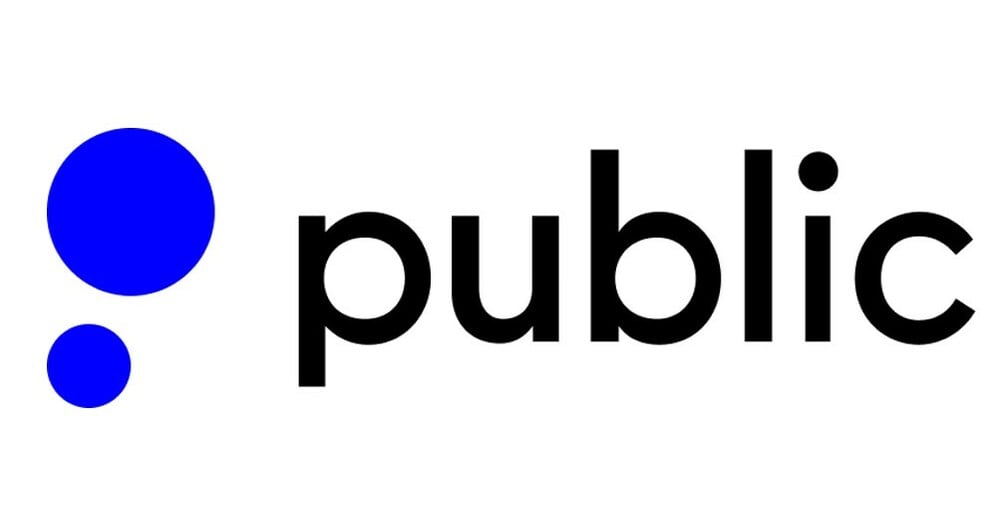Options Definition
When you purchase an options contract, you're purchasing the right to buy or sell a stock (or other security) at a set price.

Many, or all, of the products featured on this page are from our advertising partners who compensate us when you take certain actions on our website or click to take an action on their website. However, this does not influence our evaluations. Our opinions are our own. Here is a list of our partners and here's how we make money.
The investing information provided on this page is for educational purposes only. NerdWallet, Inc. does not offer advisory or brokerage services, nor does it recommend or advise investors to buy or sell particular stocks, securities or other investments.
An options contract is the right to buy or sell a security at a specific price by a specific date.
A call option gives the investor the right to buy; a put option is for the right to sell.
Options can magnify your returns, but they can also introduce additional risk and complexity to your portfolio.
What are options?
Options are contracts that give investors the right to buy or sell a stock or other security at a set price by a certain date. Call options are profitable if the underlying security rises in price, while put options are profitable if it falls. Options are derivatives — their value is derived from an underlying asset.
An options contract isn't an obligation to buy or sell the underlying security. You also have the option to let the contract expire, hence the name. However, when buying options, you’ll pay what’s known as a “premium” up front, which you’ll lose if you let the contract expire.
» Dive deeper: What is options trading?
NerdWallet rating 4.8 /5 | NerdWallet rating 4.6 /5 | NerdWallet rating 4.6 /5 |
Fees $0 per online equity trade | Fees $0 | Fees 0% - 4% varies by type of transaction; other fees may apply |
Account minimum $0 | Account minimum $0 | Account minimum $0 |
Promotion None no promotion available at this time | Promotion Earn up to $10,000 when you transfer your investment portfolio to Public. | Promotion Get $200 in crypto when you sign up. Terms Apply. |
How options work
Options contracts exist for a variety of securities, but this article focuses primarily on options for stocks. In that context, there are two main types of options contracts:
Call options. A call option gives you the right to buy a company’s stock for a specific price (known as the “strike price”) within a specific time period, referred to as its “expiration.”
Put options. A put option gives you the right to sell a company’s stock at an agreed upon strike price before its expiration.
Once you buy the contract, a few things can happen between the time you purchase it and the time of expiration. You can:
Exercise the option, meaning you’ll buy or sell shares of the stock at the strike price.
Sell the contract to another investor.
Let the contract expire and walk away with no further financial obligation.
» Learn the differences between options and stocks
Options pros and cons
Investors use options for different reasons, but the main advantages are:
Buying an option means taking control of more shares than if you bought the stock outright with the same amount of money.
Options are a form of leverage, offering magnified returns.
An option gives an investor time to see how things play out.
An option protects investors from downside risk by locking in the price without the obligation to buy.
But there are also risks, namely:
You can lose your entire investment in a relatively short period.
It can get a lot more complicated than buying stocks — you have to know what you’re doing.
With certain types of options trades, it's possible to lose more than your initial investment.
» Dive deeper: Learn how to trade options
Options terms to know
Here are a few terms you’ll come across as you learn more about options. (See our full options terms and definitions page for more information.)
In the money. A call option is “in the money” if the strike price is below the stock price, while a put option is in the money if the strike price is above the stock price.
At the money. If the stock price and strike price are the same for either calls or puts, the option is “at the money.”
Out of the money. A call option is “out of the money” if the strike price is above the stock price, while a put option is out of the money if the strike price is below the stock price.
Premiums. This is what you’ll have to pay to buy an options contract. Conversely, this is the money you’ll potentially make if you sell an options contract.
Derivatives. A derivative is a type of financial product whose value depends on — is derived from — the performance of another financial instrument. Options are derivatives.
Spreads. Spreads are an advanced trading strategy in which an options trader buys and sells multiple contracts at different strike prices.
Example of a call option
Let’s say a company’s stock is currently $50 per share. You could buy a call option to buy the stock at $50 (the strike price) that expires in six months, for a premium of $5. Premiums are assessed per-share, so this call option would cost $500 ($5 premium X 100 shares). Note that when buying options, you’ll choose from an available list of strike prices, and it doesn’t have to be the same as the current stock price.
If the stock price remains at or drops below $50 during the six-month period and never recovers, you could let the contract expire worthless, and your total loss would be the $500 you spent on the premium. That $500 is also the maximum amount you could lose on the investment.
Now let’s say the price rises to $60. You could exercise your option to buy the 100 shares at the strike price of $50, then turn around and sell them at $60. In this instance, your return on investment would be $500. (It would cost $5,000 to buy the shares, but you would sell them for $6,000 for a gain of $1,000. Subtract the cost of the premium, and you’re left with $500 profit.)
When buying a call option, there will be a breakeven point at which you’ll earn a profit. In this example, that breakeven point is $55. So, if the stock is trading between $50 and $55, you would be able to recoup some of your investment, but it would still be for a loss.
If the stock price rises above the strike price, the contract itself gains intrinsic value, and the price of the premium will rise accordingly. This means you could sell the contract to another investor before expiration for more than you bought it for, taking a profit. You’ll have to look at several factors to determine whether you should sell an options contract or exercise it.
» Learn more: How to buy and sell call options
Example of a put option
Put options serve a similar purpose as shorting a stock — both let you profit if the stock price falls. But puts can also be used as a hedge against price drops that might hurt your portfolio.
Using the same example above, let’s say a company’s stock is trading for $50, and you buy a put option with a strike price of $50, with a premium of $5 and an expiration of six months. The contract costs $500.
If the stock price falls to $40, you could exercise your right to sell the stock at the $50 strike price. In this instance, you won't earn any profit, but you'll protect your shares from losing value. If the price rises, the contract will expire worthless, and you would be out a maximum of $500. In a sense, put options could be considered insurance for your stocks: If the stock price falls, you’re insured to sell at the higher strike price, and if it rises, the premium you paid was the fixed cost of that insurance.
But put options can be used for speculation, too, and you don’t have to own the underlying stock to buy a put option. Let’s say you bought the put option and the stock drops to $40, but you don’t own it. You could buy the stock at $40, then turn around and sell it at $50. This would return a profit of $500. (You would buy 100 shares at $40 for $4,000, then sell them at $50 for $5,000, generating $1,000. Subtract the $500 premium, and you earned $500.)
Like call options contracts, a put options contract can have intrinsic value. If the underlying stock price drops below the strike price, the contract will become more attractive, and the cost of its premium will rise accordingly. In this case, you could sell the contract to another investor for a profit.
» Learn more: Buying put options and selling puts
Risk vs. return in options trading
Call options
If you think a stock is going to rise, you can either buy and own the stock outright, or buy call options. But there’s a big difference between these two.
In the example above, notice that it costs $500 to take control of 100 shares of a stock valued at $50 per share. If you were to buy the stock outright with the same $500 investment, you would only be able to take control of 10 shares. This is where the return-magnifying power of options comes into play, and why options are considered a form of leverage.
From the example above, we know that if the stock price rises to $60, it yields a $500 return — you’ve doubled your money. But if it rises to $70, your profit rises to $1,500. If it rises to $80? That’s a 60% increase in the stock’s price that resulted in a return of $2,500. Had you bought the stock outright, that same 60% price increase would give you a return of a comparatively meager $300.
But where there’s the chance for high reward, there’s high risk. If you’d invested $500 in the stock outright, a subtle dip in the price doesn’t mean much. A 10% decline, for example, means you’d be down $50, and you can wait indefinitely for the price to rise again before selling.
Spending $500 on a call options contract, though, means a 10% drop in the stock price could render the contract worthless if the stock price falls below the strike price, and you have a limited amount of time for it to rise again. If it doesn’t, that’s a $500 loss, or 100% of your investment.
Put options
When buying put options, the max amount you can lose is similar to call options: If the stock price rises above the strike price, you’d let the contract expire, and you’d lose your whole $500 investment.
However, the magnification of returns we saw in call options goes the other way in put options. If the stock price drops to $30, you would see $1,500 in profit. At $20, profit would be $2,500. But this also means there’s a limit to profit on put options — the stock can’t go any lower than zero. Conversely, when buying a call option, profit potential is theoretically limitless.
» Learn more: Options trading strategies
Earn 4.4% APY by investing in U.S. Treasury Bills*
Maximize your cash by investing in low-risk, government-backed T-Bills. All the work is done for you — just make the deposit and watch your money grow.

The options buyer-seller relationship
With options, it’s critical to remember that for every buyer, there’s a seller, whose motivations and incentives are the opposite of the buyer.
So, when you buy a call option, for example, you’re hoping the price will rise, because you have the right to purchase the stock at the lower strike price.
But the seller on the other side of that transaction has an obligation to sell the stock at the strike price if the buyer chooses to exercise the option. This means the seller wants the stock price to fall — if it falls below the strike price, the buyer would likely let the contract expire, and the seller would keep the premium as profit. However, if the stock price rises and the buyer exercises the option, the seller must sell the shares at the strike price, which would likely be lower than the current stock price.
If the seller doesn’t already own the underlying stock, they’re still on the hook for selling it to the buyer. So, if the stock price rose to $60, they would have to buy the stock at $60, then sell it at $50. This would result in a loss of $500. (Buying the stock for $60 would cost $6,000, then selling at $5,000 marks a loss of $1,000. But the seller keeps the $500 premium, so total losses are $500.)
In this instance, if the stock price continues to rise, the call seller’s loss is theoretically infinite, just as the buyer’s profit is theoretically infinite.
This relationship exists for every options trade, whether you’re buying calls or puts or selling them. Add in the various options trading strategies, and you see how options trading — and the risks associated with it — get complicated, fast.








